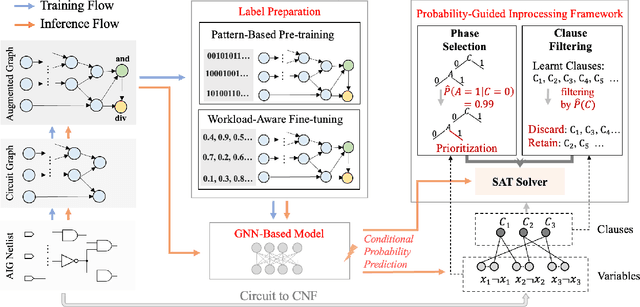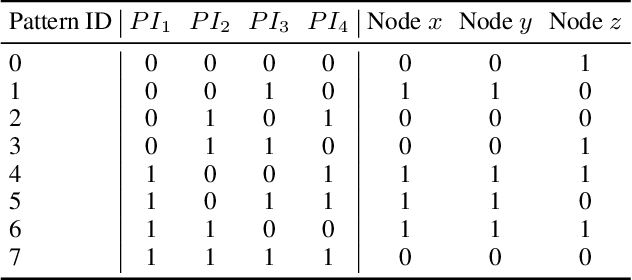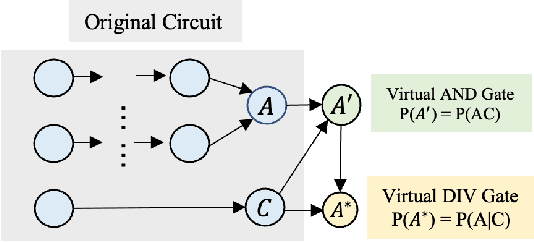Qiang Xu
Eric
FailureAtlas:Mapping the Failure Landscape of T2I Models via Active Exploration
Sep 26, 2025Abstract:Static benchmarks have provided a valuable foundation for comparing Text-to-Image (T2I) models. However, their passive design offers limited diagnostic power, struggling to uncover the full landscape of systematic failures or isolate their root causes. We argue for a complementary paradigm: active exploration. We introduce FailureAtlas, the first framework designed to autonomously explore and map the vast failure landscape of T2I models at scale. FailureAtlas frames error discovery as a structured search for minimal, failure-inducing concepts. While it is a computationally explosive problem, we make it tractable with novel acceleration techniques. When applied to Stable Diffusion models, our method uncovers hundreds of thousands of previously unknown error slices (over 247,000 in SD1.5 alone) and provides the first large-scale evidence linking these failures to data scarcity in the training set. By providing a principled and scalable engine for deep model auditing, FailureAtlas establishes a new, diagnostic-first methodology to guide the development of more robust generative AI. The code is available at https://github.com/cure-lab/FailureAtlas
Concept-SAE: Active Causal Probing of Visual Model Behavior
Sep 26, 2025Abstract:Standard Sparse Autoencoders (SAEs) excel at discovering a dictionary of a model's learned features, offering a powerful observational lens. However, the ambiguous and ungrounded nature of these features makes them unreliable instruments for the active, causal probing of model behavior. To solve this, we introduce Concept-SAE, a framework that forges semantically grounded concept tokens through a novel hybrid disentanglement strategy. We first quantitatively demonstrate that our dual-supervision approach produces tokens that are remarkably faithful and spatially localized, outperforming alternative methods in disentanglement. This validated fidelity enables two critical applications: (1) we probe the causal link between internal concepts and predictions via direct intervention, and (2) we probe the model's failure modes by systematically localizing adversarial vulnerabilities to specific layers. Concept-SAE provides a validated blueprint for moving beyond correlational interpretation to the mechanistic, causal probing of model behavior.
Revolution or Hype? Seeking the Limits of Large Models in Hardware Design
Sep 05, 2025Abstract:Recent breakthroughs in Large Language Models (LLMs) and Large Circuit Models (LCMs) have sparked excitement across the electronic design automation (EDA) community, promising a revolution in circuit design and optimization. Yet, this excitement is met with significant skepticism: Are these AI models a genuine revolution in circuit design, or a temporary wave of inflated expectations? This paper serves as a foundational text for the corresponding ICCAD 2025 panel, bringing together perspectives from leading experts in academia and industry. It critically examines the practical capabilities, fundamental limitations, and future prospects of large AI models in hardware design. The paper synthesizes the core arguments surrounding reliability, scalability, and interpretability, framing the debate on whether these models can meaningfully outperform or complement traditional EDA methods. The result is an authoritative overview offering fresh insights into one of today's most contentious and impactful technology trends.
Beyond Tokens: Enhancing RTL Quality Estimation via Structural Graph Learning
Aug 26, 2025Abstract:Estimating the quality of register transfer level (RTL) designs is crucial in the electronic design automation (EDA) workflow, as it enables instant feedback on key metrics like area and delay without the need for time-consuming logic synthesis. While recent approaches have leveraged large language models (LLMs) to derive embeddings from RTL code and achieved promising results, they overlook the structural semantics essential for accurate quality estimation. In contrast, the control data flow graph (CDFG) view exposes the design's structural characteristics more explicitly, offering richer cues for representation learning. In this work, we introduce a novel structure-aware graph self-supervised learning framework, StructRTL, for improved RTL design quality estimation. By learning structure-informed representations from CDFGs, our method significantly outperforms prior art on various quality estimation tasks. To further boost performance, we incorporate a knowledge distillation strategy that transfers low-level insights from post-mapping netlists into the CDFG predictor. Experiments show that our approach establishes new state-of-the-art results, demonstrating the effectiveness of combining structural learning with cross-stage supervision.
MPCAR: Multi-Perspective Contextual Augmentation for Enhanced Visual Reasoning in Large Vision-Language Models
Aug 17, 2025Abstract:Despite significant advancements, Large Vision-Language Models (LVLMs) continue to face challenges in complex visual reasoning tasks that demand deep contextual understanding, multi-angle analysis, or meticulous detail recognition. Existing approaches often rely on single-shot image encoding and prompts, limiting their ability to fully capture nuanced visual information. Inspired by the notion that strategically generated "additional" information can serve as beneficial contextual augmentation, we propose Multi-Perspective Contextual Augmentation for Reasoning (MPCAR), a novel inference-time strategy designed to enhance LVLM performance. MPCAR operates in three stages: first, an LVLM generates N diverse and complementary descriptions or preliminary reasoning paths from various angles; second, these descriptions are intelligently integrated with the original question to construct a comprehensive context-augmented prompt; and finally, this enriched prompt guides the ultimate LVLM for deep reasoning and final answer generation. Crucially, MPCAR achieves these enhancements without requiring any fine-tuning of the underlying LVLM's parameters. Extensive experiments on challenging Visual Question Answering (VQA) datasets, including GQA, VQA-CP v2, and ScienceQA (Image-VQA), demonstrate that MPCAR consistently outperforms established baseline methods. Our quantitative results show significant accuracy gains, particularly on tasks requiring robust contextual understanding, while human evaluations confirm improved coherence and completeness of the generated answers. Ablation studies further highlight the importance of diverse prompt templates and the number of generated perspectives. This work underscores the efficacy of leveraging LVLMs' inherent generative capabilities to enrich input contexts, thereby unlocking their latent reasoning potential for complex multimodal tasks.
Circuit-Aware SAT Solving: Guiding CDCL via Conditional Probabilities
Aug 06, 2025



Abstract:Circuit Satisfiability (CSAT) plays a pivotal role in Electronic Design Automation. The standard workflow for solving CSAT problems converts circuits into Conjunctive Normal Form (CNF) and employs generic SAT solvers powered by Conflict-Driven Clause Learning (CDCL). However, this process inherently discards rich structural and functional information, leading to suboptimal solver performance. To address this limitation, we introduce CASCAD, a novel circuit-aware SAT solving framework that directly leverages circuit-level conditional probabilities computed via Graph Neural Networks (GNNs). By explicitly modeling gate-level conditional probabilities, CASCAD dynamically guides two critical CDCL heuristics -- variable phase selection and clause managementto significantly enhance solver efficiency. Extensive evaluations on challenging real-world Logical Equivalence Checking (LEC) benchmarks demonstrate that CASCAD reduces solving times by up to 10x compared to state-of-the-art CNF-based approaches, achieving an additional 23.5% runtime reduction via our probability-guided clause filtering strategy. Our results underscore the importance of preserving circuit-level structural insights within SAT solvers, providing a robust foundation for future improvements in SAT-solving efficiency and EDA tool design.
AC-Refiner: Efficient Arithmetic Circuit Optimization Using Conditional Diffusion Models
Jul 03, 2025Abstract:Arithmetic circuits, such as adders and multipliers, are fundamental components of digital systems, directly impacting the performance, power efficiency, and area footprint. However, optimizing these circuits remains challenging due to the vast design space and complex physical constraints. While recent deep learning-based approaches have shown promise, they struggle to consistently explore high-potential design variants, limiting their optimization efficiency. To address this challenge, we propose AC-Refiner, a novel arithmetic circuit optimization framework leveraging conditional diffusion models. Our key insight is to reframe arithmetic circuit synthesis as a conditional image generation task. By carefully conditioning the denoising diffusion process on target quality-of-results (QoRs), AC-Refiner consistently produces high-quality circuit designs. Furthermore, the explored designs are used to fine-tune the diffusion model, which focuses the exploration near the Pareto frontier. Experimental results demonstrate that AC-Refiner generates designs with superior Pareto optimality, outperforming state-of-the-art baselines. The performance gain is further validated by integrating AC-Refiner into practical applications.
ECCV 2024 W-CODA: 1st Workshop on Multimodal Perception and Comprehension of Corner Cases in Autonomous Driving
Jul 02, 2025
Abstract:In this paper, we present details of the 1st W-CODA workshop, held in conjunction with the ECCV 2024. W-CODA aims to explore next-generation solutions for autonomous driving corner cases, empowered by state-of-the-art multimodal perception and comprehension techniques. 5 Speakers from both academia and industry are invited to share their latest progress and opinions. We collect research papers and hold a dual-track challenge, including both corner case scene understanding and generation. As the pioneering effort, we will continuously bridge the gap between frontier autonomous driving techniques and fully intelligent, reliable self-driving agents robust towards corner cases.
Dissecting the Impact of Mobile DVFS Governors on LLM Inference Performance and Energy Efficiency
Jul 02, 2025Abstract:Large Language Models (LLMs) are increasingly being integrated into various applications and services running on billions of mobile devices. However, deploying LLMs on resource-limited mobile devices faces a significant challenge due to their high demand for computation, memory, and ultimately energy. While current LLM frameworks for mobile use three power-hungry components-CPU, GPU, and Memory-even when running primarily-GPU LLM models, optimized DVFS governors for CPU, GPU, and memory featured in modern mobile devices operate independently and are oblivious of each other. Motivated by the above observation, in this work, we first measure the energy-efficiency of a SOTA LLM framework consisting of various LLM models on mobile phones which showed the triplet mobile governors result in up to 40.4% longer prefilling and decoding latency compared to optimal combinations of CPU, GPU, and memory frequencies with the same energy consumption for sampled prefill and decode lengths. Second, we conduct an in-depth measurement study to uncover how the intricate interplay (or lack of) among the mobile governors cause the above inefficiency in LLM inference. Finally, based on these insights, we design FUSE - a unified energy-aware governor for optimizing the energy efficiency of LLM inference on mobile devices. Our evaluation using a ShareGPT dataset shows FUSE reduces the time-to-first-token and time-per-output-token latencies by 7.0%-16.9% and 25.4%-36.8% on average with the same energy-per-token for various mobile LLM models.
Ming-Omni: A Unified Multimodal Model for Perception and Generation
Jun 11, 2025Abstract:We propose Ming-Omni, a unified multimodal model capable of processing images, text, audio, and video, while demonstrating strong proficiency in both speech and image generation. Ming-Omni employs dedicated encoders to extract tokens from different modalities, which are then processed by Ling, an MoE architecture equipped with newly proposed modality-specific routers. This design enables a single model to efficiently process and fuse multimodal inputs within a unified framework, thereby facilitating diverse tasks without requiring separate models, task-specific fine-tuning, or structural redesign. Importantly, Ming-Omni extends beyond conventional multimodal models by supporting audio and image generation. This is achieved through the integration of an advanced audio decoder for natural-sounding speech and Ming-Lite-Uni for high-quality image generation, which also allow the model to engage in context-aware chatting, perform text-to-speech conversion, and conduct versatile image editing. Our experimental results showcase Ming-Omni offers a powerful solution for unified perception and generation across all modalities. Notably, our proposed Ming-Omni is the first open-source model we are aware of to match GPT-4o in modality support, and we release all code and model weights to encourage further research and development in the community.
 Add to Chrome
Add to Chrome Add to Firefox
Add to Firefox Add to Edge
Add to Edge